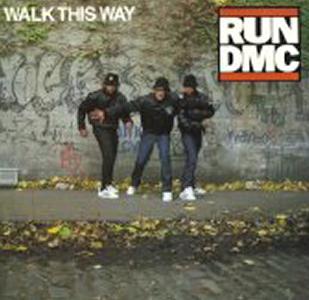
Inspired by the May 31 birthdays of D.M.C., Led Zeppelin’s John Bonham, Peter Yarrow, Johnny Paycheck, Normani, Vicki Sue Robinson, Waka Flocka Flame, and Corey Hart.

Inspired by the May 31 birthdays of D.M.C., Led Zeppelin’s John Bonham, Peter Yarrow, Johnny Paycheck, Normani, Vicki Sue Robinson, Waka Flocka Flame, and Corey Hart.
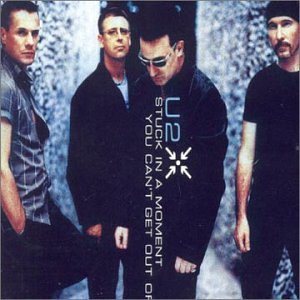
Inspired by Mother’s Day, the passing of Betty Wright, and the May 10 birthdays of U2‘s Bono, Sex Pistols’ Sid Vicious, Spinners’ Henry Fambrough, Donovan, Traffic’s Dave Mason, Larry Williams, Fred Astaire, Underworld’s Karl Hyde, Young MC, Filter’s Richard Patrick, Jay Ferguson, Craig Mack, Sunscreem’s Lucia Holm and Young Disciples’ Carleen Anderson.
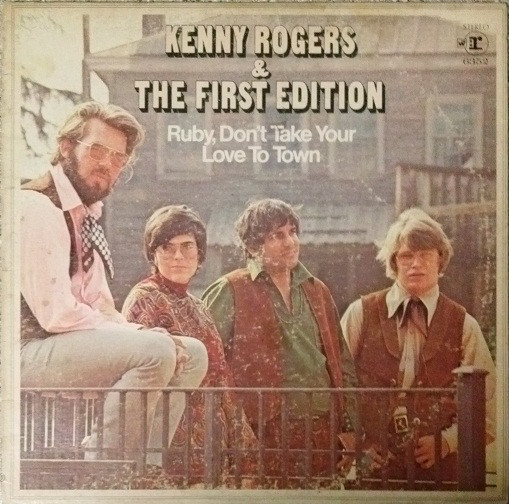
Inspired by the passing of Kenny Rogers, the March 21 birthdays of The Stylistics’ Russell Thompkins Jr., Solomon Burke, The Prodigy’s Maxim, Eddie Money, Mungo Jerry’s Ray Dorsett, Bonzo Dog Doo-Dah Band’s Vivian Stanshall; and World Poetry Day.

Foo Fighters – “Learn to Fly”
Today is Foo Fighter Dave Grohl’s birthday. This is easily my favorite song from the group’s album There Is Nothing Left to Lose. Grohl said it’s one of his least favorites on the album. What does he know?
Kings of Leon – “Sex on Fire”
Today is the birthday of Kings of Leon’s lead singer Caleb Followill. About this song, Caleb’s brother and fellow bandmate Nathan said in an interview “Sex On Fire was just kind of a little lyric just to fill in to kill some time until we could actually write something that wasn’t about sex and fire.”
Kings of Leon – “Use Somebody”
Grammy Award winner for Record of the Year.
Foo Fighters – “Everlong”
David Letterman introduced a performance of this song on his talk show as “my favorite band playing my favorite song.”
Bobby “Blue” Bland – “I’ll Take Care of You”
Written by Brook Benton and originally recorded by Bobby “Blue Bland,” this song was covered by Gil Scott-Heron, whose version was remixed by Jamie xx. That remix was sampled in the Drake/Rihanna hit “Take Care.”
James Brown – “King Heroin”
This song is a poem written by New York City Stage Delicatessen worker Manny Rosen set to music.
Barbara Lewis – “Baby I’m Yours”
This song was written by Van McCoy, who hit #1 with his classic disco recording “The Hustle.”
Mary Wells – “Two Lovers”
This song was written by Smokey Robinson, who was inspired by a movie he was watching on television in which a woman had two lovers. Imagine the song we would have gotten had Smokey been watching The Thing With Two Heads.
Oasis – “Slide Away”
Oasis member Noel Gallagher, who write this song, says it contains his brother Liam’s best vocals ever.
Foo Fighters – “I’ll Stick Around”
This song’s music video was directed by Jerry Casale of Devo, who is coming up later on this playlist.
Dionne Warwick – “Promises, Promises”
Like most of Dionne Warwick’s sixties hits, this one was written by Burt Bacharach and Hal David.
LL Cool J – “I’m That Type of Guy”
Today James Todd Smith turns 52 years old. He’s cool and the ladies love him, hence his rap moniker LL Cool J.
Run-D.M.C. – “Run’s House”
Run-D.M.C. sampled this in their final top 40 pop hit, “Down with the King.”
Clarence Carter – “Strokin”
Today is the 84th birthday of Clarence Carter Clarence Carter Clarence Carter Clarence Carter Ooh Shit Clarence Carter.
The Smashing Pumpkins – “Landslide”
In 1994, Smashing Pumpkins’ version of this Fleetwood Mac song hit #3 on the US Modern Rock chart, becoming the first version of this song to chart.
Arcade Fire – “The Suburbs”
The title track from the 2011 Album of the Year Grammy winner.
Jack Jones – “Wives and Lovers”
Another Grammy Award winner, this one for Best Vocal Performance, Male. As with the Dionne Warwick song earlier in this playlist, this was written by the team of Burt Bacharach and Hal David. The lyrics, which may have already seemed backwards when they wrote it in 1963, come across as downright anachronistic today, telling women they need to stay attractive and attend to their husbands if they want them to remain faithful. Today is Jack Jones’ birthday.
Clarence Carter – “Making Love (At the Dark End of the Street)”
Another classic performance from Carter, referenced in “Strokin.”
Devo – “Working in the Coal Mine”
A cover of the Lee Dorsey classic, written by the late Alan Toussaint, whose birthday is today.
The Pointer Sisters – “Yes We Can Can”
Alan Toussaint write this song also. He wrote a lot of great songs. He also co-produced the Labelle classic “Lady Marmalade.” Respect.
Click here to like Tunes du Jour on Facebook.
Follow me on Twitter.
Follow me on Instagram.
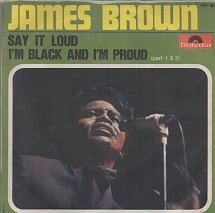
In 1979, President Jimmy Carter declared June Black Music Month. In 2016, President Barack Obama, who recognized the month as African-American Music Appreciation Month, said the music of African-American artists helped the country “to dance, to express our faith through song, to march against injustice, and to defend our country’s enduring promise of freedom and opportunity for all.” Today’s Tunes du Jour playlist embodies that sentiment.
(The Spotify embed function is not working.)
Click here to like Tunes du Jour on Facebook.
Follow me on Twitter.
Follow me on Instagram.
Today is the day after Thanksgiving here in the United States of America. You’re officially allowed to start listening to holiday music now. To get you started, I compiled a playlist of what I consider to be 100 of the best Christmas songs. Okay, 98 songs, a stand-up routine and a skit. It’s a mix of standards, versions of standards with which you may not be familiar, and obscure but delightful tunes.
Enjoy!
Click here to like Tunes du Jour on facebook!
Follow me on Twitter: @tunesdujour
Follow me on Instagram: @glennschwartz
By 1986, Aerosmith appeared to have had their best years behind them. Sales of their releases that decade lagged significantly behind their hits in the 1970s, and the group’s members were struggling with drug addictions.
They did have fans, though. One was music producer Rick Rubin. He was working with rap group Run-D.M.C., who were known in hip hop circles and with music critics for incorporating rock guitars and beats in their boastful raps, such as “Rock Box” and “King of Rock.”
Rubin suggested Run-D.M.C. do a remake of Aerosmith’s 1977 hit “Walk This Way,” but the rappers had no interest in doing a cover. However, the group’s DJ, Jam Master Jay, was open to the idea, and Rubin called Aerosmith’s Steven Tyler and Joe Perry to come into the studio. Perry was familiar with the rappers, as his stepson was a fan. Jam Master Jay convinced Run and D.M.C. to give the remake a shot, seeing as Tyler and Perry were in the studio with Rubin.
The Run-D.M.C./Aerosmith version of “Walk This Way” was not only massively successful, but highly influential as well. It became Run-D.M.C.’s first crossover hit, and the first rap track to make the top ten of Billboard’s Hit 100, peaking at #4, six notches higher than Aerosmith’s original peaked. It opened the door to future song/rap collaborations, something that continues to dominate the charts to this day, not to mention bringing “rock rap” to a wide audience.
Steven Tyler went to rehab in 1986, and the other members of Aerosmith also sought treatment for their drug addictions. On the heels of the success of the “Walk This Way” remake, Aerosmith released the Permanent Vacation album in the late summer of 1987. Its first single, “Dude (Looks Like a Lady),” became the group’s first hit single outside the Run-D.M.C. collaboration since 1978’s “Come Together.” They followed that single with a string of big hits over the next few years, including “Love in an Elevator,” “Cryin’,” “Janie’s Got a Gun,” “I Don’t Want to Miss a Thing,” “Livin’ on the Edge,” and “Jaded.”
This week’s Throwback Thursday playlist spotlights the best of 1986, kicking off with the groundbreaking “Walk This Way,” performed by Run-D.M.C. and featuring Aerosmith’s “Steven Tyler and Joe Perry.
Click here to like Tunes du Jour on Facebook!
Follow me on Twitter: @TunesDuJour
Follow me on Instagram: @GlennSchwartz
Translated literally, the French expression “ooh la la” means “Oh there there.”
Per About.com, “ooh la la” is an interjection that “can indicate surprise, disappointment, commiseration, distress, annoyance… any moderately strong reaction to something that was just said or done. Note that there is no connotation of sexiness or impropriety in French.”
Per UrbanDictionary.com, “ooh la la” is “a universally understood way of saying ‘check out that hot piece of ass.’” I detect a slight connotation of sexiness and impropriety.
Per OxfordDictionaries.com, “ooh la la” is “used to express surprise or excitement” or “to convey a sexual innuendo.”
The music duo Goldfrapp, made up of Alison Goldfrapp and Will Gregory, released a single called “Ooh La La” in 2005. Written by the duo, the song tells of Alison’s lust for someone without a romantic component.
Goldfrapp’s “Ooh La La” became their first top ten pop single in the UK and their third #1 on the US dance chart. It was nominated for a Grammy Award for Best Dance Recording, and Rolling Stone magazine placed it at #10 on their list of the year’s best singles.
Today, Alison Goldfrapp turns 50 years old. Tunes du Jour’s weekly dance party is heavy on her group’s music, kicking off with “Ooh La La.”
Click here to like Tunes du Jour on Facebook!
Follow me on Twitter: @TunesDuJour
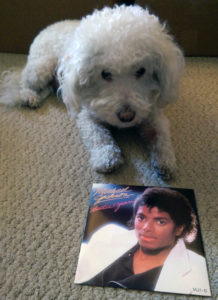
MTV debuted on August 1, 1981. Back then it was a music video network. It positioned itself as a rock station. Most of the videos shown were of songs made by Caucasian performers, though rock-leaning black acts such as Joan Armatrading and the Bus Boys got some play.
Then came “Billie Jean.” The second single from Michael Jackson’s Thriller, “Billie Jean” was accompanied by a stylish video featuring a mesmerizing performance from Jackson. However, it wasn’t a rock song. It didn’t fit the format of rock radio stations, and it didn’t fit the format of MTV either.
But there is a big difference between radio and music television. There were plenty of radio stations and many different formats. You may not hear “Billie Jean” on the rock stations, but you could hear it on r&b stations and pop stations and dance-leaning stations. However, there was only one music television – MTV.
In his autobiography, Howling at the Moon, Walter Yetnikoff, head of CBS Records, for whom Jackson recorded (and where I worked in my first music business job), wrote “I screamed bloody murder when MTV refused to air [Jackson’s] videos. They argued that their format, white rock, excluded Michael’s music. I argued they were racist assholes – and I’d trumpet it to the world if they didn’t relent. I’ve never been more forceful or obnoxious. I’ve also never been as effective, threatening to pull all our videos. With added pressure from [Thriller producer] Quincy Jones, they caved in, and in doing so the MTV color line came crashing down.”
Jackson’s video for “Billie Jean” aired on MTV, followed just weeks later by his video for “Beat It,” a song whose guitar solo from Eddie Van Halen helped make it a hit on rock radio. These two videos made Jackson, already a superstar, a worldwide phenomenon with a humongous fan base that transcended race, age and location in a way never seen before. These two videos made MTV, a year and a half old and fairly popular in white suburban areas, a cultural institution. These two videos made the music video, then not something done for many singles, particularly those performed by artists of color, an art form and a necessary marketing tool.
Some people tuned in to MTV to see the Michael Jackson videos, and while watching the channel, discovered other acts. Some people tuned in to MTV to watch “white rock” videos, and while watching the channel, discovered Michael Jackson.
MTV went to showcase more “non-rock” videos. In 1988, they launched their hugely popular program Yo! MTV Raps, something that would have been completely unexpected just five years earlier, pre-“Billie Jean.”
While MTV deserves credit for making “Billie Jean” and Thriller successful, the person most responsible is Jackson himself. He wrote the song. He sang the song. He danced the song. Quincy Jones did not want “Billie Jean” to appear on Thriller. He didn’t like the title. He didn’t like the bassline. He felt the song’s introduction was too long. Jackson argued “But that’s the jelly!…That’s what makes me want to dance.” Jones wasn’t ready for this jelly, but Jackson stood his ground.
In May of 1983, NBC aired a tribute to Motown Records. Motown: Yesterday, Today, Forever featuring many legends who recorded for the storied label performing their classics. We saw Diana Ross, the Temptations, Marvin Gaye, Smokey Robinson and the Miracles, Stevie Wonder, the Four Tops, Martha Reeves, Lionel Richie and the Commodores, Mary Wells, Junior Walker and then some. It was a terrific show, but the talk of the town following its airing was the performance of a song not from the Motown catalogue – Michael Jackson’s “Billie Jean.” The iconic performance, during which Jackson brought the famous moonwalk to the world at large, pushed him that much more ahead of any other performer working in music back then.
Following “Beat It,” CBS Records released four more singles from Thriller. All seven of the singles released (the album had only nine songs!) went top ten, breaking the record of most top ten hits from a single-artist album that was set a few years earlier by…Michael Jackson, whose Off the Wall gave us four. Before Thriller, four singles for one album was considered a lot. Thriller raised the bar for blockbuster albums, and subsequent releases such as Bruce Springsteen’s Born in the U.S.A., Prince’s Purple Rain, Def Leppard’s Hysteria and Janet Jackson’s Control each produced more than four hits.
“Billie Jean” changed everything.
On this week’s Throwback Thursday playlist, Tunes du Jour spotlights 1983, kicking off with Michael Jackson’s classic “Billie Jean.”
Click here to like Tunes du Jour on Facebook!
Follow me on Twitter: @TunesDuJour